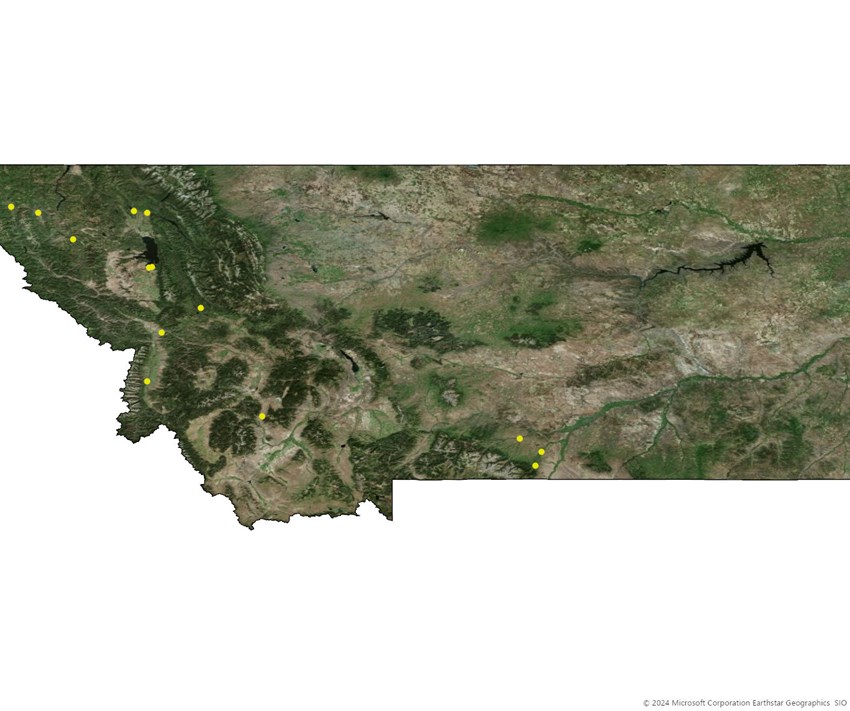Trained volunteers in Montana play a crucial role in monitoring water quality across the state to protect our rivers, streams, and lakes. High quality, scientifically credible data is required to support decision making regarding our water resources and it is collected using scientifically valid methods and protocols. MMW supports water quality monitoring efforts in Montana by providing scientific, technical and financial support to citizen-led watershed groups to help ensure that groups are using scientifically sound methodologies in all aspects of their monitoring efforts. In 2024, MMW is funding fifteen volunteer water quality monitoring groups. While many groups have been previously funded, we’d like to introduce some of our newcomers! MMW is excited to support these volunteer groups helping increase water quality monitoring capacity in the state.
Mission Bay Preserve HOA
The Mission Bay Preserve HOA (MBPHOA) is concerned about the water quality in a 3-acre pond fed by the Flathead Irrigation System. The pond is about 300 yards from Flathead Lake, and any overflow is discharged through a natural riparian area. The concern was increased by a sudden algae event in September 2023. MBPHOA’s goal is to collect baseline data, monitor changes in the pond water, and create a plan to improve the quality of the water to minimize negative impacts on water quality entering Flathead Lake.
Whitefish River Water Quality Team
Residents living near the Whitefish River, in the absence of other long term water quality monitoring, are volunteering to establish a long-term monitoring effort. The Whitefish River is one of several tributaries to Flathead Lake, flanked by the following land uses: agriculture, golf courses, a nearby lumber mill and houses with acreages, septic, and high-density housing on county sewer. The group hopes to determine how land uses are influencing changes in aquatic habitats. Approximately 28 miles of the Whitefish River will be monitored at three locations.
Thompson Chain of Lakes Stewardship Coalition
Thompson Chain of Lakes Stewardship Coalition (TCLSC)’s goal is to collect baseline water quality data on three of the eighteen lakes that make up the Thompson Chain of Lakes. These three lakes are important to monitor because they are closed basin spring fed lakes with no inlet nor outlet making them extremely vulnerable to contaminants. Many residents in this community get their only drinking water from the lakes. Those residents with wells, for the most part, have shallow wells of 50 feet or less. There is no water quality monitoring currently being done on any of these lakes and specifically there is no baseline data nor ongoing analysis of nitrogen or phosphorous levels. Baseline data can be used to justify the implementation of more intensive watershed studies and it can set the stage for formal water quality assessments to take place.
Stillwater Valley Watershed Council
The Stillwater Valley Watershed Council (SVWC) of Absarokee, Montana will be continuing their Stillwater-Rosebud Water Quality Initiative (SRWQI) with the support of MMW and DEQ. SRWQI is a multi-year monitoring program which began in September 2020 and is continuing indefinitely. The SVWC was officially formed in 2010 by local grassroots volunteers with a passion for ensuring the Stillwater Valley remain a pristine watershed. The SVWC’s mission includes a Water Quality Goal which states, “Improve the quality and supply of water in the Stillwater River Watershed. Balance water needs and availability, both recreational and agriculturally, through shared sacrifice and water conservation and contamination prevention.” SVWC will obtain scientifically valid water quality data at key sites in the Stillwater River-Rosebud Creek drainages which will support on-the-ground watershed improvements and landowner education projects over the long term.
Clarks Fork Yellowstone Partnership
MMW is supporting Clarks Fork Yellowstone Partnership (CFYP) by providing gear funding to purchase a Secchi tube, turbidity meter and combined SC/pH meter. This gear will allow CFYP to continue data collection on the Clarks Fork Yellowstone River and Bridger Creek. This sampling effort will augment data collected by the CCD/NRCS/FWP during the 2019 through 2021 seasons and by CFYP during 2022 and 2023. One of the goals of CFYP is to facilitate the eventual development of a watershed restoration plan. Detailed water quality data will be a critical component of that effort. These data may be able to aid farmers and ranchers with decisions about timing, quantity, and type of fertilizer to apply to their land. This monitoring may also highlight opportunities to address causes and timing of sediment runoff to the river.





